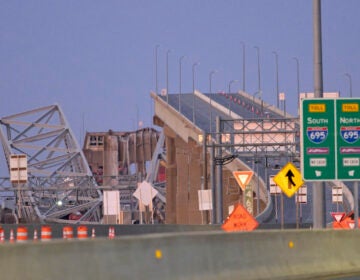Facade work refreshes 30th Street Station as Amtrak shops its commercial-district plan
Engineers and architects overseeing the project detailed the great lengths they’ve had to go to in order to faithfully restore the riverside Art Deco icon.
Listen 2:04-

A worker cleans the ornate limestone capitals of the East Portico at 30th Street Station. (Emma Lee/WHYY)
-
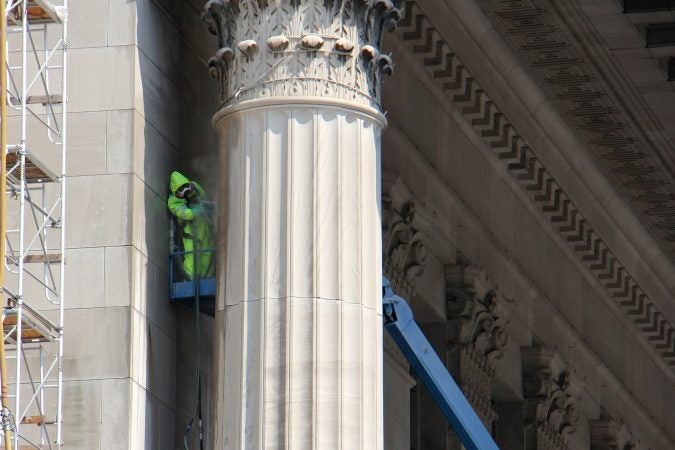
A worker cleans a column of the East Portico at 30th Street Station. (Emma Lee/WHYY)
-
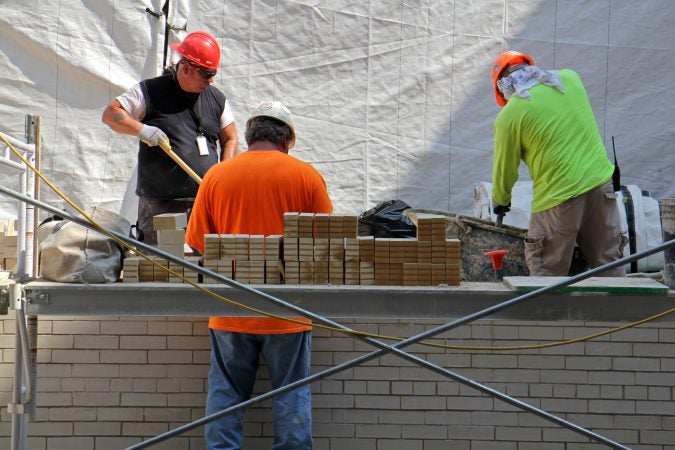
Brick repair at the North Light Court at 30th Street Station. (Emma Lee/WHYY)
-
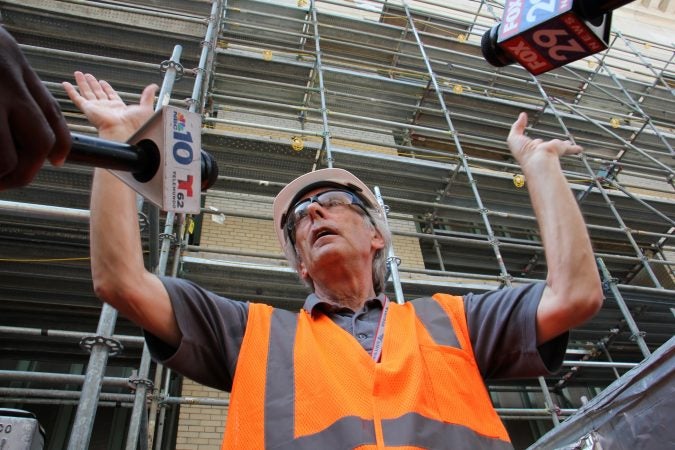
George Bryant, a senior manager on the 30th Street Station restoration project, describes work on the North Light Court. (Emma Lee/WHYY)
-
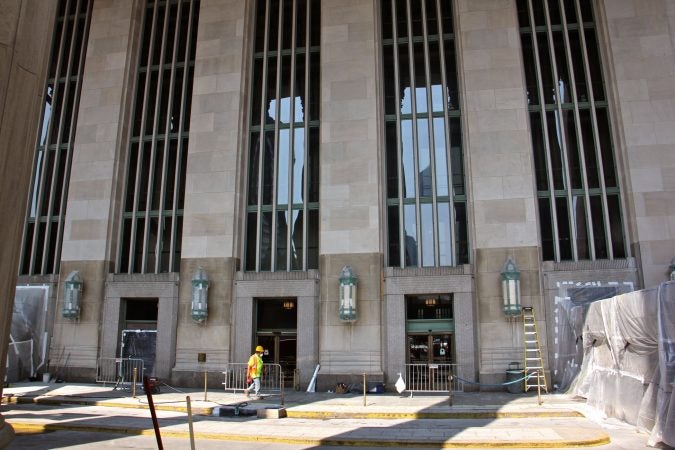
Beneath the East Portico of 30th Street Station, the cleaned limestone façade (top) can be compared with the lower, unrestored stone. (Emma Lee/WHYY)
-
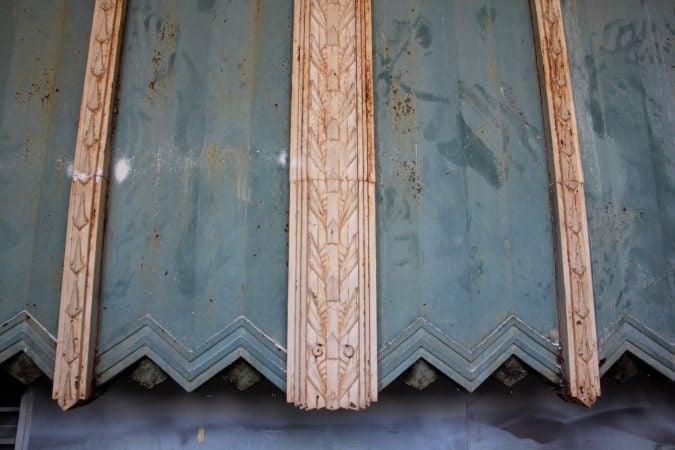
Decorative metal elements around the windows on the north side of 30th Street Station before restoration. (Emma Lee/WHYY)
-

Decorative metal elements around the windows on the north side of 30th Street Station after restoration. (Emma Lee/WHYY)
-

Supplies are lowered to the work site at the North Light Court at 30th Street Station. (Emma Lee/WHYY)
-

The soaring windows at 30th Street Station. (Emma Lee/WHYY)
-

The soaring windows at 30th Street Station undergoing restoration. (Emma Lee/WHYY)
-
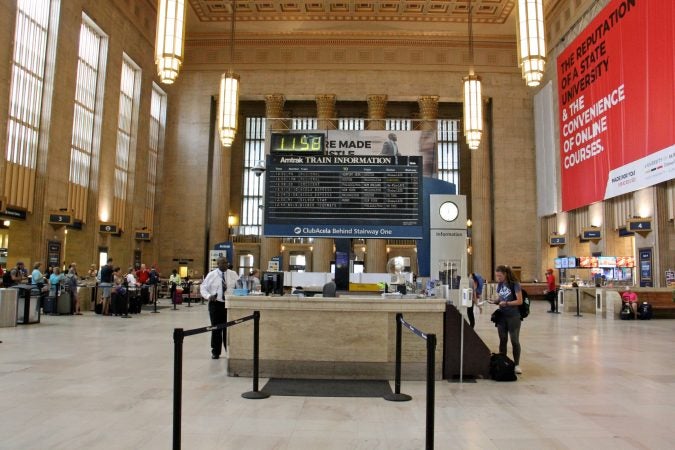
Lobby at 30th Street Station. (Emma Lee/WHYY)
-

Lobby at 30th Street Station. (Emma Lee/WHYY)
As work continues on the exterior, Amtrak continues to seek a developer to oversee its ambitious, 35-year plan to create a commercial district surrounding the station. The plan was developed in coordination with nearby stakeholders Drexel University and Brandywine Realty Trust, which hope to develop the 14 acres just west of the station into a small forest of towering skyscrapers called Schuylkill Yards.
When the rehab work began in 2016, the cost of restoring the station’s limestone facade and repairing or replacing its bronze portico doors and soaring windows was estimated at $60 million. Since then, the budget has ballooned to $109 million, but that was a deliberate decision, said Bhaskaran.
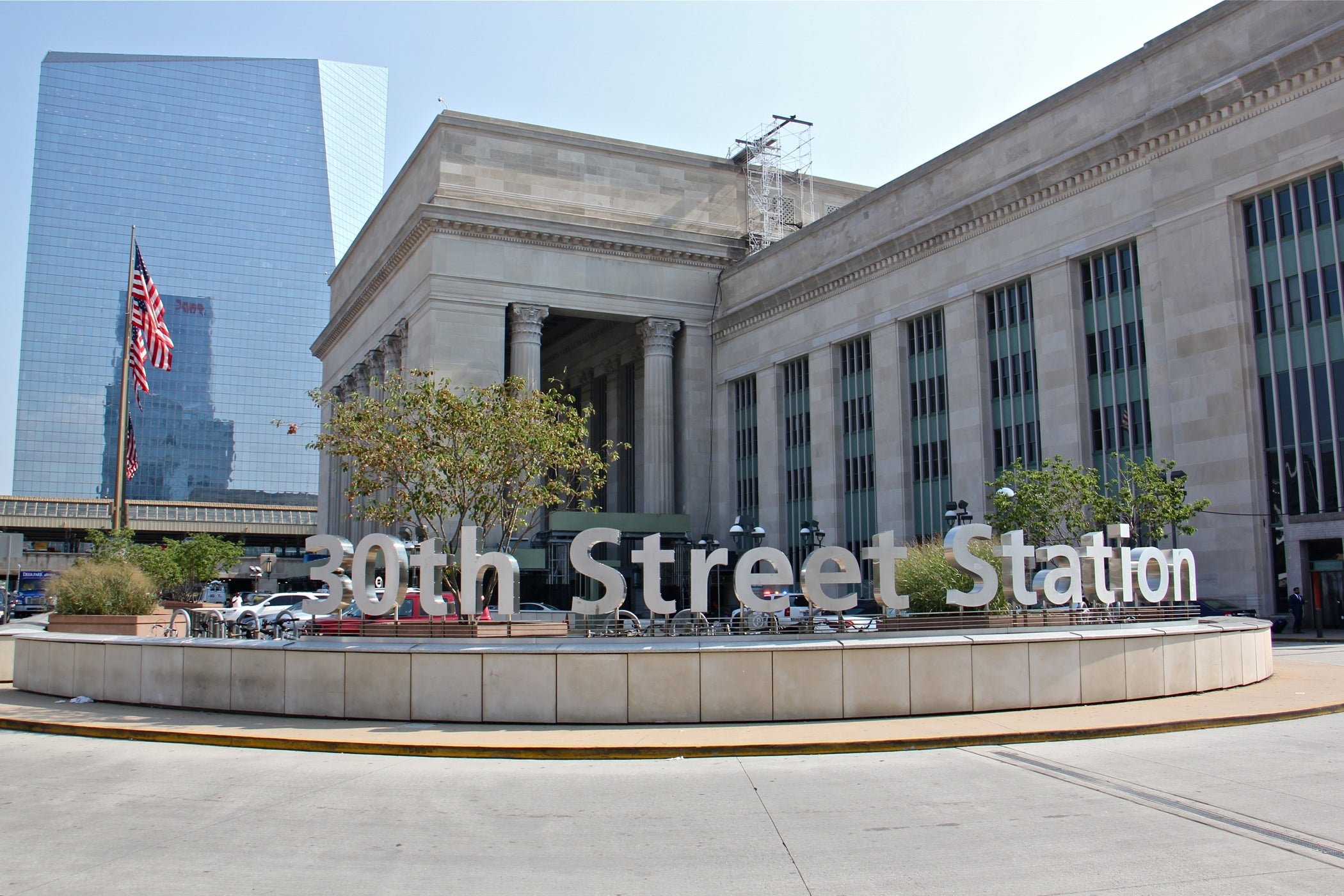
“During the course of the project, we did add additional scope,” he said. “So it was actually a business decision taken, because we added a lot of additional work, in terms of blast-film and additional limestone replacement, because this is a once-in-a-lifetime opportunity to do this work. And these decisions were taken at the highest level.”
Blast film is a treatment applied to the glass to reduce shards if there’s an explosion; it basically makes the station’s windows tempered, like a car windshield. According to Bhaskaran, the additional cost addresses federal regulations promulgated after the Sept. 11, 2001, attacks that mandated target-hardening measures.
During an hour-long tour, engineers and architects overseeing the project detailed the great lengths they’ve had to go to in order to faithfully restore the riverside Art Deco icon.
The windows are made of bubble glass, which looks like hardened bubble wrap. But the manufacturer that supplied those unique panes went out of business long ago, sending the team on a long hunt for the next best thing, said George Bryant, of Vega Solutions Inc., which is managing the construction.
Mark 1 Restoration Co., the project’s contractor, “actually found a company in Oregon who was able to mold the glass — as opposed to the original glass, which was rolled, like through a washing-machine roller,” said Bryant. “The new stuff was actually formed in a mold and then laminated together — it’s very close. But we went crazy trying to find something that would be a close match.”
All told, 1,545 window panes were restored, and another 713 replaced.
Replacing the building’s exterior limestone was also no simple task, said project architect Jessica Fair, of Wiss Janney Elstner Associates. The station was built with Alabama limestone, which, like Cognac or Champagne, must come from its eponymous state to earn the appellation.
“You’ll see a big difference between the Alabama limestone and the Indiana limestone, which is actually on the building across the street,” said Fair, referring to the former U.S. Post Office building, constructed in 1935. “Alabama limestone has a lot more veins and inclusions in it. Part of the inclusions could be iron ore, so you can see maybe what would look like rust staining on the stone — that’s actually nothing wrong with the stone, that’s just the iron ore inclusion.”
“You also see a lot more fossils,” she added, noting that they discovered during the restoration “intact large fossils throughout the building.”
To replace the 950 limestone panels that were too damaged for repair, the project team had to order hunks of limestone from the heart of Dixie. Then the newly quarried limestone was freighted up to Chicago for cutting, before finally making its way east to Philly.
To speed the restoration, which has been slowed by the need to keep the station open and operating during construction, crews worked day and night, in a pair of 10-hour shifts.
WHYY is your source for fact-based, in-depth journalism and information. As a nonprofit organization, we rely on financial support from readers like you. Please give today.




